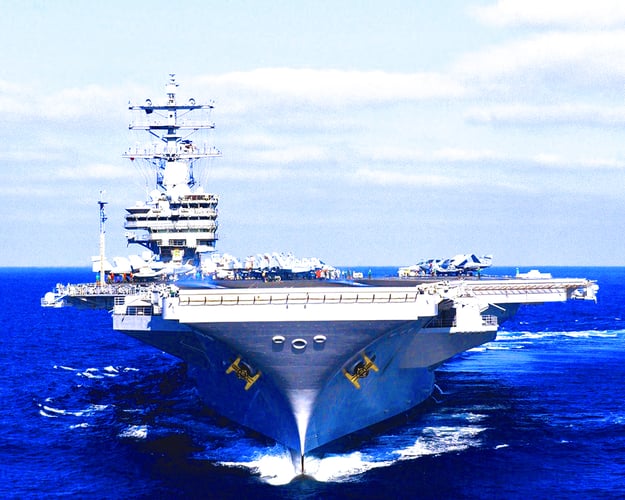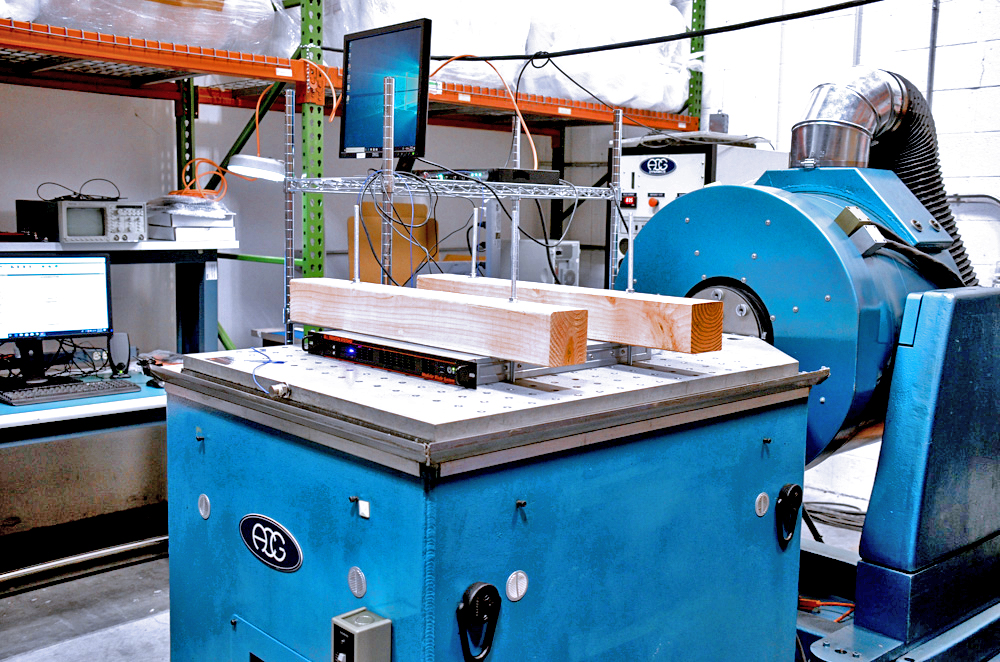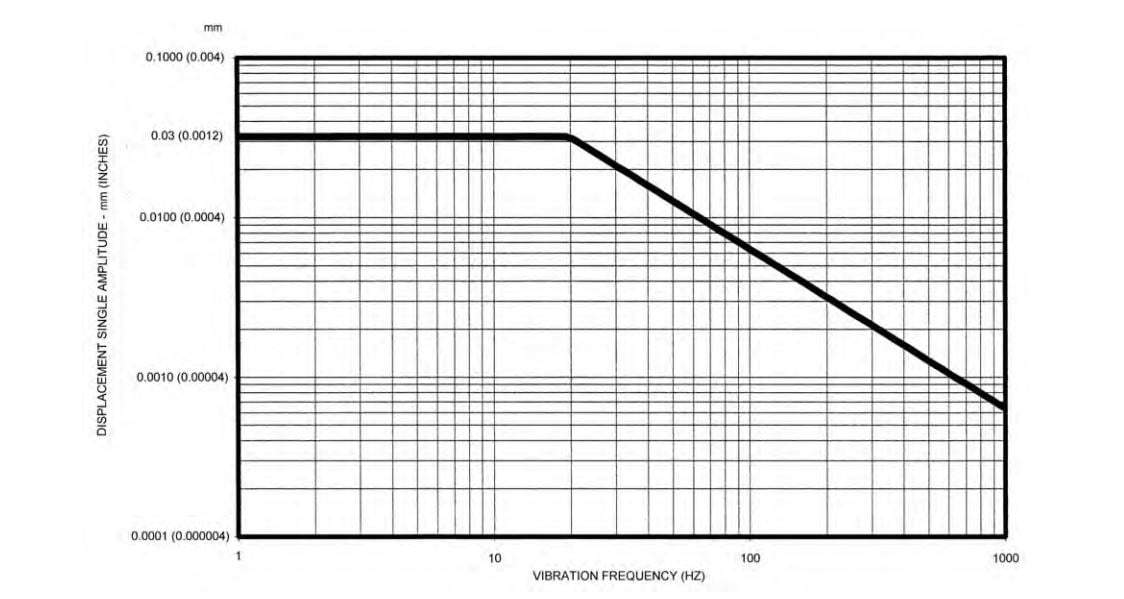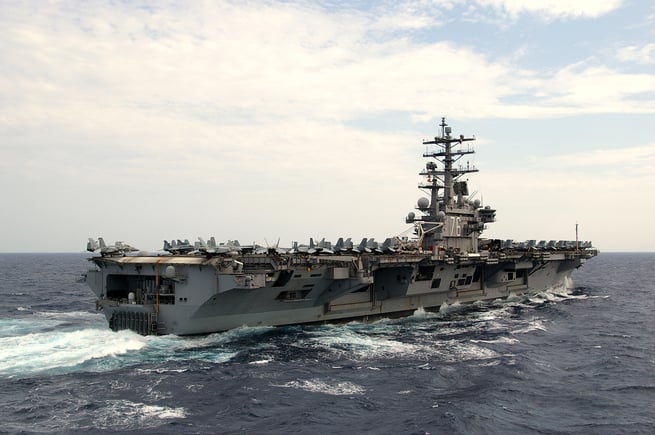Share this
MIL-STD-167-1: Everything You Need to Know
by Brett Daniel on Jun 26, 2020 4:53:06 PM
-1.png?width=1000&name=Untitled%20design%20(32)-1.png)
Graphic: Navy shipboard programs and applications may require a rugged server or workstation certified to MIL-STD-167-1 vibration standards. Trenton Systems can take care of that for you. Just drop us a line.
Note: Trenton Systems is not a compliance testing facility. We manufacture rugged servers and workstations that conform to military and industrial standards, such as MIL-STD-810 and DO-160, and we can ensure that our systems comply with these standards using our in-house testing equipment, or by sending our systems to a third-party compliance testing laboratory for validation, but our facility does not offer compliance testing services for products manufactured outside of Trenton Systems. For a list of laboratories that can assist you with your testing needs, please read this blog post, which lists the best compliance testing laboratories in the world.
No matter where your mission-critical server goes, it's bound to encounter vibrations along the way - during shipping, during transport and maybe even during its operational state.
When a military computer encounters certain levels of vibration, functional and structural failure can occur if it hasn't been tested to meet military vibration standards, such as those outlined in the popular MIL-STD-810 testing standard.
What MIL-STD-810 doesn't address specifically, however, is rugged computers and system components installed on ships owned by the United States Navy.
That's a task for MIL-STD-167-1.

Photo: Any equipment or rugged computer system installed on Navy ships powered by conventionally shafted propeller propulsion - that is - a ship with rotating blades that move the vessel across a body of water, should undergo MIL-STD-167-1 testing prior to installation.
What is MIL-STD-167-1 testing?
MIL-STD-167-1, currently MIL-STD-167-1A, is a military standard published by the U.S. Department of Defense and used by test engineers to assess the impact of mechanical vibrations on Navy shipboard equipment, including rugged servers, workstations and their components.
The test procedures in MIL-STD-167-1 apply to any Navy shipboard equipment subjected to mechanical vibrations from the environment, as well as internal excitation caused by unbalanced rotating components.
Essentially, any equipment or rugged computer system intended to be installed on Navy ships powered by conventionally shafted propeller propulsion, i.e., a ship with rotating blades that move the vessel across a body of water, should undergo MIL-STD-167-1 testing prior to installation.
It’s important to note, however, that MIL-STD-167-1 tests for shipboard environmental occurrences of vibration, not propulsion system or shafting vibrations.
“Shipboard equipment that conforms to the requirements of MIL-STD-167-1A is found to satisfactorily perform its functions aboard ship.
Equipment for which compliance with MIL-STD-167-1A is not specified or is waived could experience failures induced by vibration in shipboard service.”
- Excerpt from MIL-STD-167-1A
The official title of MIL-STD-167-1 is Mechanical Vibrations of Shipboard Equipment (Type 1 – Environmental and Type II – Internally Excited).
MIL-STD-167-1 is one of the shorter testing publications in the DoD’s arsenal of standards, at just 23 pages, compared to, for instance, the more than 1,000 pages in MIL-STD-810.

Photo: Trenton Systems' trusty Uholtz-Dickie shock and vibe table, which we use to perform shock and vibe testing in-house at our headquarters in Lawrenceville, Georgia. Shock and vibe tables like this one are often used for vibration testing as specified in MIL-STD-167-1 and other military and industrial standards.
What tests are in MIL-STD-167-1?
MIL-STD-167-1A tests and requirements are divided into two categories:
- Type 1 – Environmental
- Type 2 – Internally Excited
Type 1 - Environmental
According to the standard, “the primary purpose of Type I vibration testing is to prove the physical and functional integrity of equipment when subjected to a prescribed, steady-state vibration environment.”
Each of the Type 1 – Environmental tests specified in MIL-STD-167-1A are conducted separately in each of the three principal directions of vibration, a process also known as triaxial vibration testing. Equipment is typically in its operational or service state during testing and is secured to the shock and vibe table at the same points or areas of attachment that it will be secured aboard a Navy ship.
The Type 1 – Environmental category includes an exploratory vibration test, a variable frequency test, an endurance test and an endurance test for mounted equipment.
Vibratory Displacement of Environmental Vibration (Table I)
| Frequency Range (Hz) | Table Single Amplitude (Inch) |
| 4-15 | 0.030 ± 0.006 |
| 16-25 | 0.020 ± 0.004 |
| 26-33 | 0.010 ± 0.002 |
Table: MIL-STD-167-1's vibratory displacement table, which depicts the frequency ranges and amplitudes used by test engineers during assessment.
Exploratory vibration test
During the MIL-STD-167-1 exploratory vibration test, the equipment is secured to a shock and vibe table and vibrated at frequencies ranging from 4 Hz to 33 Hz, at a table vibratory single amplitude of 0.010 ± 0.002 inch.
Frequencies at which functional or structural damage or impairment occurs are recorded. Should any adverse effects occur, the equipment or system moves on to endurance testing.
Variable frequency test
During the MIL-STD-167-1 variable frequency test, the equipment being tested is vibrated at frequencies ranging from 4 Hz to 33 Hz in discrete frequency intervals of 1 Hz at the amplitudes depicted in Table 1 of the standard.
At each interval of the variable frequency test, vibration is maintained for five minutes. As with the exploratory vibration test, any observance of damage or impairment is recorded, and the system or piece of equipment, if adversely affected, moves on to endurance testing.
Duration of Endurance Test In a Given Orthogonal Direction at Each Test Frequency (Table II)
| Number of Endurance Test Frequencies | Test Time Duration at Each Endurance Test Frequency | Total Time |
| 1 | 2 hours | 2 hours |
| 2 | 1 hour | 2 hours |
| 3 | 40 minutes | 2 hours |
| 4 | 40 minutes | 2 hours, 40 minutes |
| n > 2 | 40 minutes | 40 x n minutes |
Table: MIL-STD-167-1's endurance test duration table, used in cases where there are multiple response prominence frequencies selected for endurance testing
Endurance test
During MIL-STD-167-1 endurance testing, the frequencies at which damage or impairment were observed in the previous two tests are used to further test the equipment or system for vibrational stress. The equipment or system is vibrated for at least two hours at the frequency that affected it the harshest during the previous tests.
Vibratory Displacement of Environmental Vibration for Mast-Mounted Equipment (Table III)
| Frequency Range (Hz) | Table Single Amplitude (Inch) |
| 4-10 | 0.100 ± 0.010 |
| 11-15 | 0.030 ± 0.006 |
| 16-25 | 0.020 ± 0.004 |
| 26-33 | 0.010 ± 0.002 |
Table: MIL-STD-167-1's vibratory displacement table for mast-mounted equipment, used during testing of equipment intended for installation on masts, such as radar antennae and other associated equipment
Endurance test for mounted equipment
During MIL-STD-167-1 endurance tests for mounted equipment, the system or piece of equipment is designed for a static load of 2.5g in vertical and transverse directions to compensate for rough weather factors. The system or equipment is vibrated for at least two hours at 33 Hz, unless response prominences were observed by the test engineer or the equipment meets specific exceptions.
Type 2 – Internally Excited
The Type 2 – Internally Excited category specifies balance and vibration requirements that apply to any rotating machinery aboard a Navy ship. Its essential purpose is to assist with the stabilization of rotor machinery to minimize internally induced vibration or excitation caused by unstable rotating components.
Types of Balancing (Table 4)
| Rotor Characteristics | Speed (RPM) | Type of Balancing | Balancing Methods & Limits |
|
Rigid, L/D 1/ <0.5 |
0–1000 | Single-plane | 5.2.2 |
| > 1000 | Two-plane | 5.2.2 | |
| Rigid, L/D>0.5 | 0–150 | Single-plane | 5.2.2 |
| >150 | Two-plane | 5.2.2 | |
| Flexible | All | Multi-plane | 5.2.3 |
Table: MIL-STD-167-1's balancing type table, used during Type 2 - Internal Excitation testing to ensure that all rotating machinery is balanced to minimize vibration, bearing wear and noise
The Type 2 category also specifies rotor characteristics, the revolutions per minute (RPM) at which the rotating machinery in question operates and the types of balancing and procedures appropriate and necessary for machinery operating at the specified RPM.
The Type 2 category specifies one vibration test procedure. During testing, the test equipment or system is mounted at a natural frequency corresponding to less than one-quarter of the frequency associated with the minimal operational speed of the unit or mounted on the shipboard mounting to which it will be fixed during real-world operation.
Vibration Acceptance Criteria for Type II Vibration (Figure 2)

Graph: The vibration acceptance criteria for Type 2 vibration testing
Once mounted, assessment begins, and the test engineers note whether vibrational displacement amplitude exceeds the frequency range and amplitude specified in Figure 2.

Photo: Don't wait for vibration to compromise your shipboard rugged server. Feel free to ask Trenton Systems about MIL-STD-167-1 certification anytime.
Conclusion
Throughout their life cycle, rugged servers, workstations, storage systems and rugged components installed on Navy ships experience varying levels of shipboard vibration for prolonged periods. Still, they’re expected to perform and endure.
Common causes of shipboard vibration include:
- Propeller blade excitation
- Unbalanced forces of propeller and shafting
- Mounting system resonances
- Change in ship speed and heading
- Changes in sea state
The assurance that a rugged computer will function as expected when exposed to these types of vibrations is an assurance that many military programs and applications require.
Trenton Systems can certify to MIL-STD-167-1A standards and has done so with its:
Whatever the needs of your mission-critical server or application, our talented engineering team will work with you to make it happen.
Share this
- High-performance computers (42)
- Military computers (38)
- Rugged computers (32)
- Cybersecurity (25)
- Industrial computers (25)
- Military servers (24)
- MIL-SPEC (20)
- Rugged servers (19)
- Press Release (17)
- Industrial servers (16)
- MIL-STD-810 (16)
- 5G Technology (14)
- Intel (13)
- Rack mount servers (12)
- processing (12)
- Computer hardware (11)
- Edge computing (11)
- Rugged workstations (11)
- Made in USA (10)
- Partnerships (9)
- Rugged computing (9)
- Sales, Marketing, and Business Development (9)
- Trenton Systems (9)
- networking (9)
- Peripheral Component Interconnect Express (PCIe) (7)
- Encryption (6)
- Federal Information Processing Standards (FIPS) (6)
- GPUs (6)
- IPU (6)
- Joint All-Domain Command and Control (JADC2) (6)
- Server motherboards (6)
- artificial intelligence (6)
- Computer stress tests (5)
- Cross domain solutions (5)
- Mission-critical servers (5)
- Rugged mini PCs (5)
- AI (4)
- BIOS (4)
- CPU (4)
- Defense (4)
- Military primes (4)
- Mission-critical systems (4)
- Platform Firmware Resilience (PFR) (4)
- Rugged blade servers (4)
- containerization (4)
- data protection (4)
- virtualization (4)
- Counterfeit electronic parts (3)
- DO-160 (3)
- Edge servers (3)
- Firmware (3)
- HPC (3)
- Just a Bunch of Disks (JBOD) (3)
- Leadership (3)
- Navy (3)
- O-RAN (3)
- RAID (3)
- RAM (3)
- Revision control (3)
- Ruggedization (3)
- SATCOM (3)
- Storage servers (3)
- Supply chain (3)
- Tactical Advanced Computer (TAC) (3)
- Wide-temp computers (3)
- computers made in the USA (3)
- data transfer (3)
- deep learning (3)
- embedded computers (3)
- embedded systems (3)
- firmware security (3)
- machine learning (3)
- Automatic test equipment (ATE) (2)
- C6ISR (2)
- COTS (2)
- COVID-19 (2)
- CPUs (2)
- Compliance (2)
- Compute Express Link (CXL) (2)
- Computer networking (2)
- Controlled Unclassified Information (CUI) (2)
- DDR (2)
- DDR4 (2)
- DPU (2)
- Dual CPU motherboards (2)
- EW (2)
- I/O (2)
- Military standards (2)
- NVIDIA (2)
- NVMe SSDs (2)
- PCIe (2)
- PCIe 4.0 (2)
- PCIe 5.0 (2)
- RAN (2)
- SIGINT (2)
- SWaP-C (2)
- Software Guard Extensions (SGX) (2)
- Submarines (2)
- Supply chain security (2)
- TAA compliance (2)
- airborne (2)
- as9100d (2)
- chassis (2)
- data diode (2)
- end-to-end solution (2)
- hardware security (2)
- hardware virtualization (2)
- integrated combat system (2)
- manufacturing reps (2)
- memory (2)
- mission computers (2)
- private 5G (2)
- protection (2)
- secure by design (2)
- small form factor (2)
- software security (2)
- vRAN (2)
- zero trust (2)
- zero trust architecture (2)
- 3U BAM Server (1)
- 4G (1)
- 4U (1)
- 5G Frequencies (1)
- 5G Frequency Bands (1)
- AI/ML/DL (1)
- Access CDS (1)
- Aegis Combat System (1)
- Armed Forces (1)
- Asymmetric encryption (1)
- C-RAN (1)
- COMINT (1)
- Cloud-based CDS (1)
- Coast Guard (1)
- Compliance testing (1)
- Computer life cycle (1)
- Containers (1)
- D-RAN (1)
- DART (1)
- DDR5 (1)
- DMEA (1)
- Data Center Modular Hardware System (DC-MHS) (1)
- Data Plane Development Kit (DPDK) (1)
- Defense Advanced Research Projects (DARP) (1)
- ELINT (1)
- EMI (1)
- EO/IR (1)
- Electromagnetic Interference (1)
- Electronic Warfare (EW) (1)
- FIPS 140-2 (1)
- FIPS 140-3 (1)
- Field Programmable Gate Array (FPGA) (1)
- Ground Control Stations (GCS) (1)
- Hardware-based CDS (1)
- Hybrid CDS (1)
- IES.5G (1)
- ION Mini PC (1)
- IP Ratings (1)
- IPMI (1)
- Industrial Internet of Things (IIoT) (1)
- Industry news (1)
- Integrated Base Defense (IBD) (1)
- LAN ports (1)
- LTE (1)
- Life cycle management (1)
- Lockheed Martin (1)
- MIL-S-901 (1)
- MIL-STD-167-1 (1)
- MIL-STD-461 (1)
- MIL-STD-464 (1)
- MOSA (1)
- Multi-Access Edge Computing (1)
- NASA (1)
- NIC (1)
- NIC Card (1)
- NVMe (1)
- O-RAN compliant (1)
- Oil and Gas (1)
- Open Compute Project (OCP) (1)
- OpenRAN (1)
- P4 (1)
- PCIe card (1)
- PCIe lane (1)
- PCIe slot (1)
- Precision timestamping (1)
- Product life cycle (1)
- ROM (1)
- Raytheon (1)
- Remotely piloted aircraft (RPA) (1)
- Rugged computing glossary (1)
- SEDs (1)
- SIM Card (1)
- Secure boot (1)
- Sensor Open Systems Architecture (SOSA) (1)
- Small form-factor pluggable (SFP) (1)
- Smart Edge (1)
- Smart NIC (1)
- SmartNIC (1)
- Software-based CDS (1)
- Symmetric encryption (1)
- System hardening (1)
- System hardening best practices (1)
- TME (1)
- Tech Partners (1)
- Total Memory Encryption (TME) (1)
- Transfer CDS (1)
- USB ports (1)
- VMEbus International Trade Association (VITA) (1)
- Vertical Lift Consortium (VLC) (1)
- Virtual machines (1)
- What are embedded systems? (1)
- Wired access backhaul (1)
- Wireless access backhaul (1)
- accredidation (1)
- aerospace (1)
- air gaps (1)
- airborne computers (1)
- asteroid (1)
- authentication (1)
- autonomous (1)
- certification (1)
- cognitive software-defined radios (CDRS) (1)
- command and control (C2) (1)
- communications (1)
- cores (1)
- custom (1)
- customer service (1)
- customer support (1)
- data linking (1)
- data recording (1)
- ethernet (1)
- full disk encryption (1)
- hardware monitoring (1)
- heat sink (1)
- hypervisor (1)
- in-house technical support (1)
- input (1)
- integrated edge solution (1)
- international business (1)
- licensed spectrum (1)
- liquid cooling (1)
- mCOTS (1)
- microelectronics (1)
- missile defense (1)
- mixed criticality (1)
- moving (1)
- multi-factor authentication (1)
- network slicing (1)
- neural networks (1)
- new headquarters (1)
- next generation interceptor (1)
- non-volatile memory (1)
- operating system (1)
- output (1)
- outsourced technical support (1)
- post-boot (1)
- pre-boot (1)
- private networks (1)
- public networks (1)
- radio access network (RAN) (1)
- reconnaissance (1)
- rugged memory (1)
- secure flash (1)
- security (1)
- self-encrypting drives (SEDs) (1)
- sff (1)
- software (1)
- software-defined radios (SDRs) (1)
- speeds and feeds (1)
- standalone (1)
- storage (1)
- systems (1)
- tactical wide area networks (1)
- technical support (1)
- technology (1)
- third-party motherboards (1)
- troposcatter communication (1)
- unlicensed spectrum (1)
- volatile memory (1)
- vpx (1)
- zero trust network (1)
- January 2025 (1)
- November 2024 (1)
- October 2024 (1)
- August 2024 (1)
- July 2024 (1)
- May 2024 (1)
- April 2024 (3)
- February 2024 (1)
- November 2023 (1)
- October 2023 (1)
- July 2023 (1)
- June 2023 (3)
- May 2023 (7)
- April 2023 (5)
- March 2023 (7)
- December 2022 (2)
- November 2022 (6)
- October 2022 (7)
- September 2022 (8)
- August 2022 (3)
- July 2022 (4)
- June 2022 (13)
- May 2022 (10)
- April 2022 (4)
- March 2022 (11)
- February 2022 (4)
- January 2022 (4)
- December 2021 (1)
- November 2021 (4)
- September 2021 (2)
- August 2021 (1)
- July 2021 (2)
- June 2021 (3)
- May 2021 (4)
- April 2021 (3)
- March 2021 (3)
- February 2021 (8)
- January 2021 (4)
- December 2020 (5)
- November 2020 (5)
- October 2020 (4)
- September 2020 (4)
- August 2020 (6)
- July 2020 (9)
- June 2020 (11)
- May 2020 (13)
- April 2020 (8)
- February 2020 (1)
- January 2020 (1)
- October 2019 (1)
- August 2019 (2)
- July 2019 (2)
- March 2019 (1)
- January 2019 (2)
- December 2018 (1)
- November 2018 (2)
- October 2018 (5)
- September 2018 (3)
- July 2018 (1)
- April 2018 (2)
- March 2018 (1)
- February 2018 (9)
- January 2018 (27)
- December 2017 (1)
- November 2017 (2)
- October 2017 (3)
/Trenton%20Systems%20Circular%20Logo-3.png?width=50&height=50&name=Trenton%20Systems%20Circular%20Logo-3.png)



Comments (2)